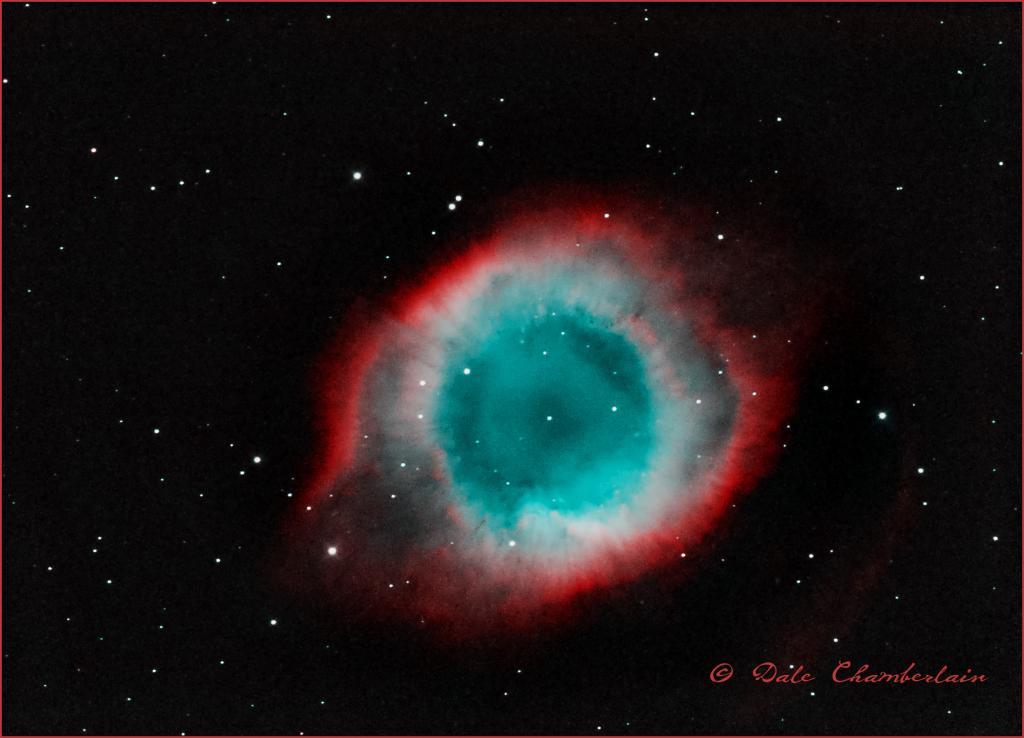
Object:The Helix Nebula, also known as NGC 7293, is a planetary nebula located in the constellation Aquarius. Discovered by Karl Ludwig Harding, probably before 1824, this object is one of the closest to the Earth of all the bright planetary nebulae. The distance is about 650 light-years. It is similar in appearance to the Cat’s Eye Nebula and the Ring Nebula, whose size, age, and physical characteristics are similar to the Dumbbell Nebula, varying only in its relative proximity and the appearance from the equatorial viewing angle.
The Helix Nebula has sometimes been referred to as the "Eye of God" in pop culture, as well as the "Eye of Sauron".
A planetary nebula is formed by an intermediate to low-mass star, which sheds its outer layers near the end of its evolution. Gases from the star in the surrounding space appear, from our vantage point, as if we are looking down a helix structure. The remnant central stellar core, known as a planetary nebula nucleus, is destined to become a white dwarf star. The observed glow of the central star is so energetic that it causes the previously expelled gases to brightly fluoresce.
Taken: September 23, 2019
Telescope: Astro-Tech 14” RC with 0.65x focal reducer
Mount: Paramount ME II unguided
Camera: ZWO ASI1600MM-Pro (cooled to -15C; unity gain) Bin 2×2.
Focuser: Moonlite Nitecrawler
Filters used: H-a, O-III narrowband on a ZWO 8 position filter wheel
Exposures: 18×120 sec H-a; 27×120 sec, for a total exposure time of 1.5 hours; calibrated with 100 bias frames, 25 dark frames, 32 flat frames with 32 dark-flats. Due to the low altitude in the night sky, time was very limited. This resulted in H-a and O-III only being captured and the image was processed in HOO (Hydrogen-A to red, O-III to blue and green).
Seeing Conditions:
Processed with PixInsight and Photoshop CC 2019